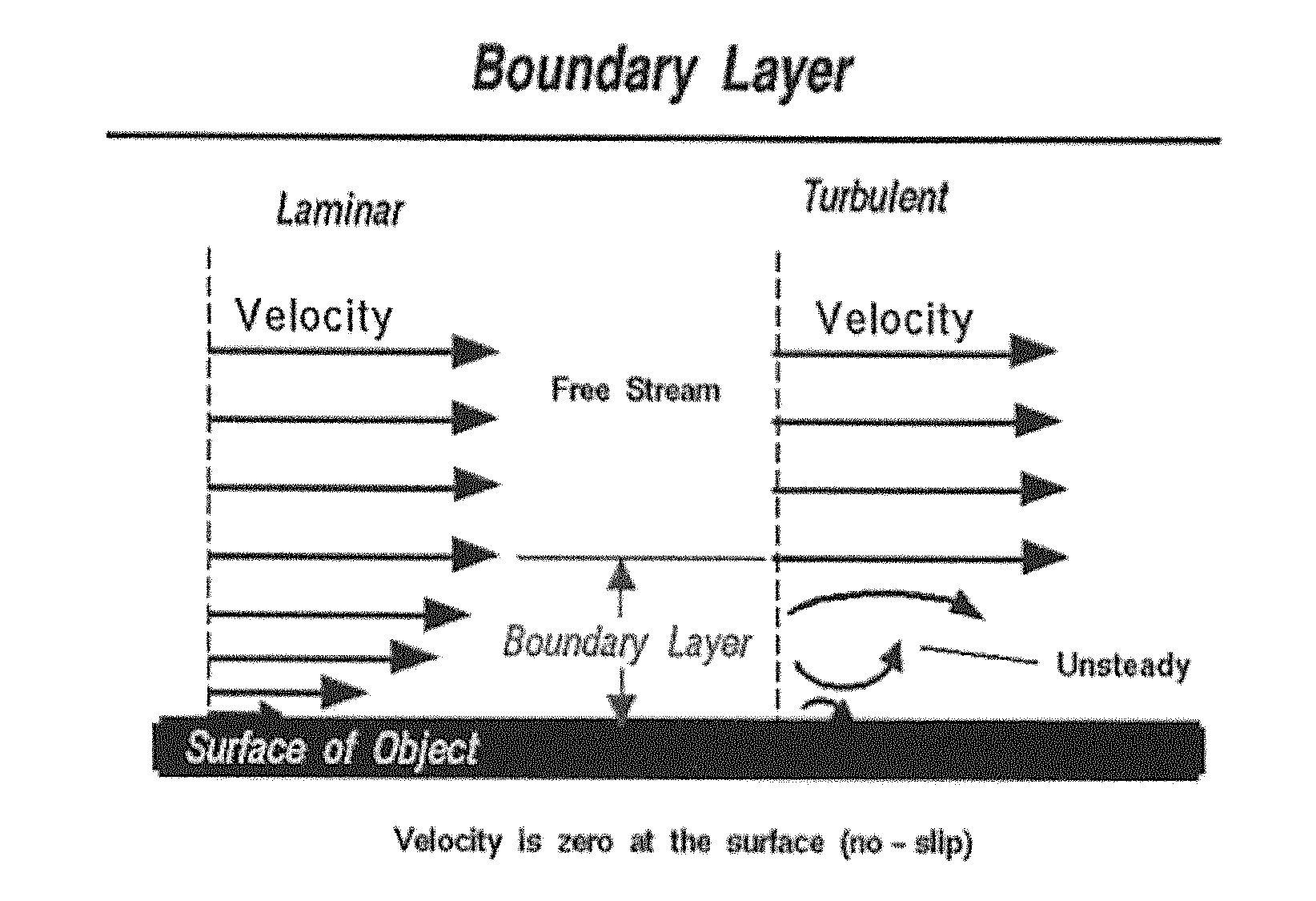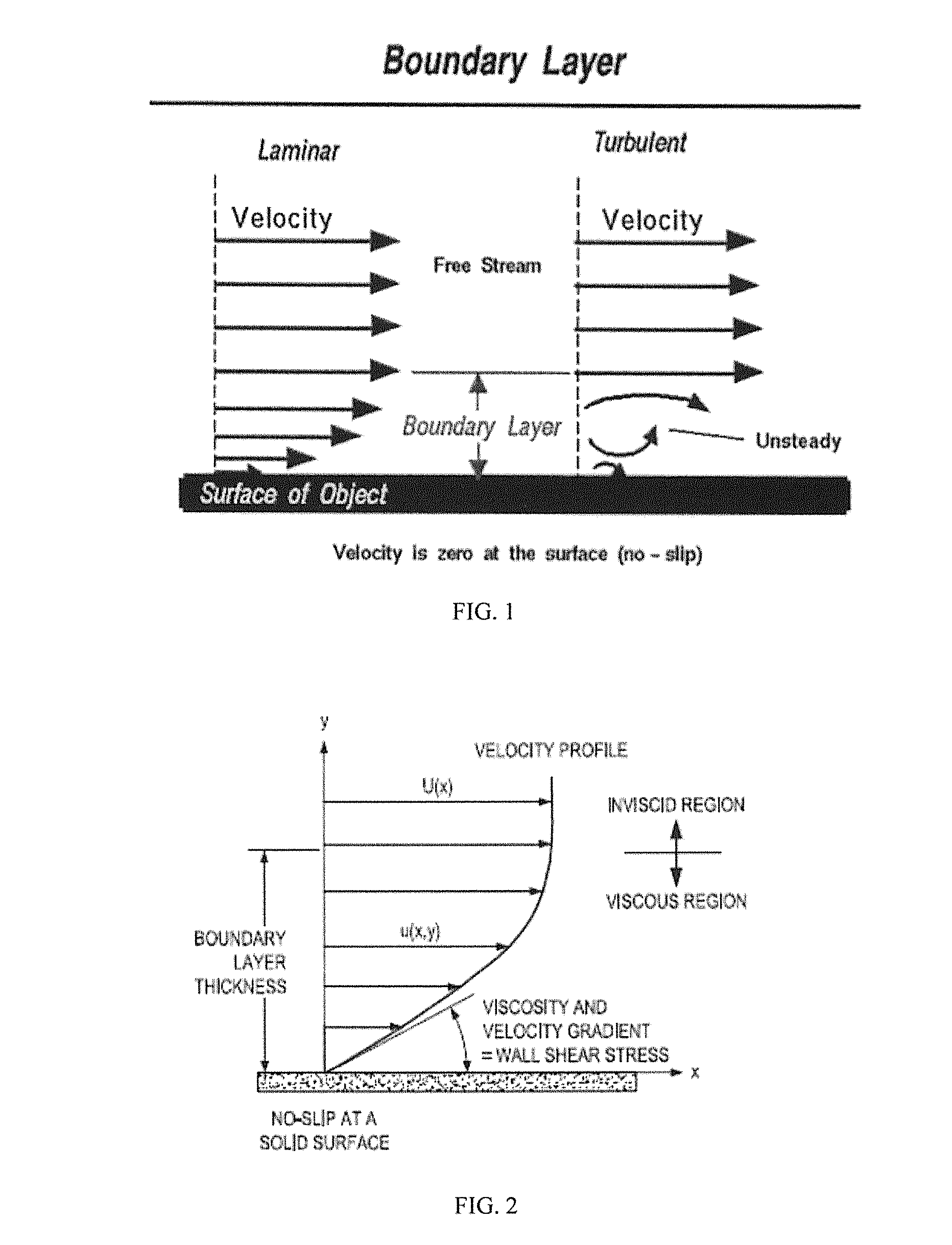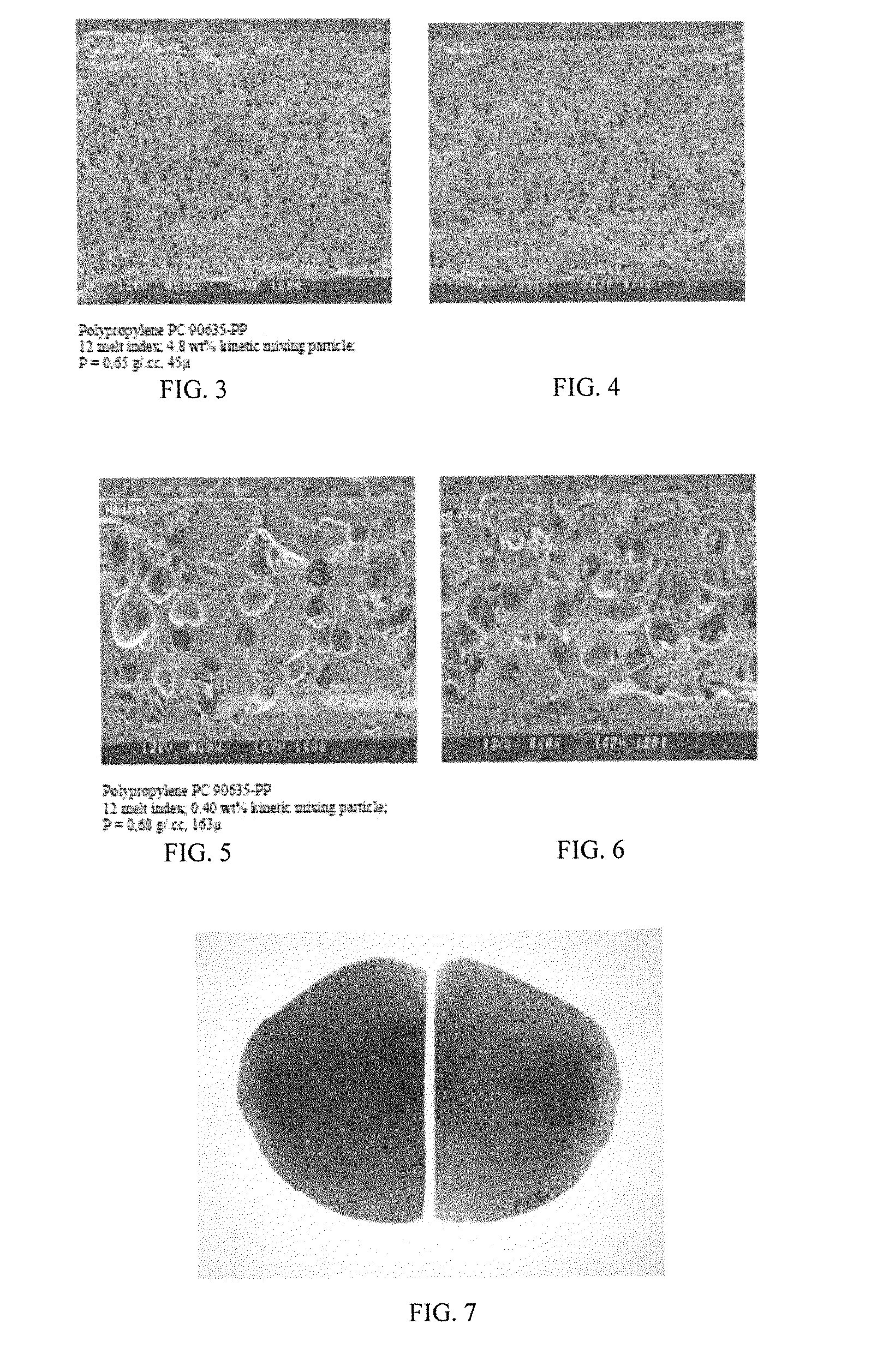Enhanced boundary layer heat transfer by particle interaction
- Summary
- Abstract
- Description
- Claims
- Application Information
AI Technical Summary
Benefits of technology
Problems solved by technology
Method used
Image
Examples
Embodiment Construction
[0113]This invention utilizes boundary layer mixing. That is, the invention relates to effects of introducing particles having sizes ranging from nano to micron, e.g., from 3 nm to 70 μm, into a fluid. The invention uses the static film principal of the boundary layer coupled with the coefficient of friction of a particle being forced to rotate or tumble in the boundary layer due to fluid velocity differentials. Therefore, the invention relates to promoting kinetic mixing through the use of structural fillers having a specialized size and specialized surface characteristics.
[0114]The invention is contemplated as improving heat transfer of a flowing fluid in the following three areas:
[0115]1. The addition of Applicant's particles promotes low surface area energy regions adjacent to the particle, which allows rapid nucleation of gases in a fluid during phase change, i.e., from a liquid to a gas. As the particles kinetically mix the stagnant film of the boundary layer, the particles ar...
PUM
| Property | Measurement | Unit |
|---|---|---|
| Fraction | aaaaa | aaaaa |
| Fraction | aaaaa | aaaaa |
| Concentration | aaaaa | aaaaa |
Abstract
Description
Claims
Application Information
 Login to View More
Login to View More - R&D
- Intellectual Property
- Life Sciences
- Materials
- Tech Scout
- Unparalleled Data Quality
- Higher Quality Content
- 60% Fewer Hallucinations
Browse by: Latest US Patents, China's latest patents, Technical Efficacy Thesaurus, Application Domain, Technology Topic, Popular Technical Reports.
© 2025 PatSnap. All rights reserved.Legal|Privacy policy|Modern Slavery Act Transparency Statement|Sitemap|About US| Contact US: help@patsnap.com



